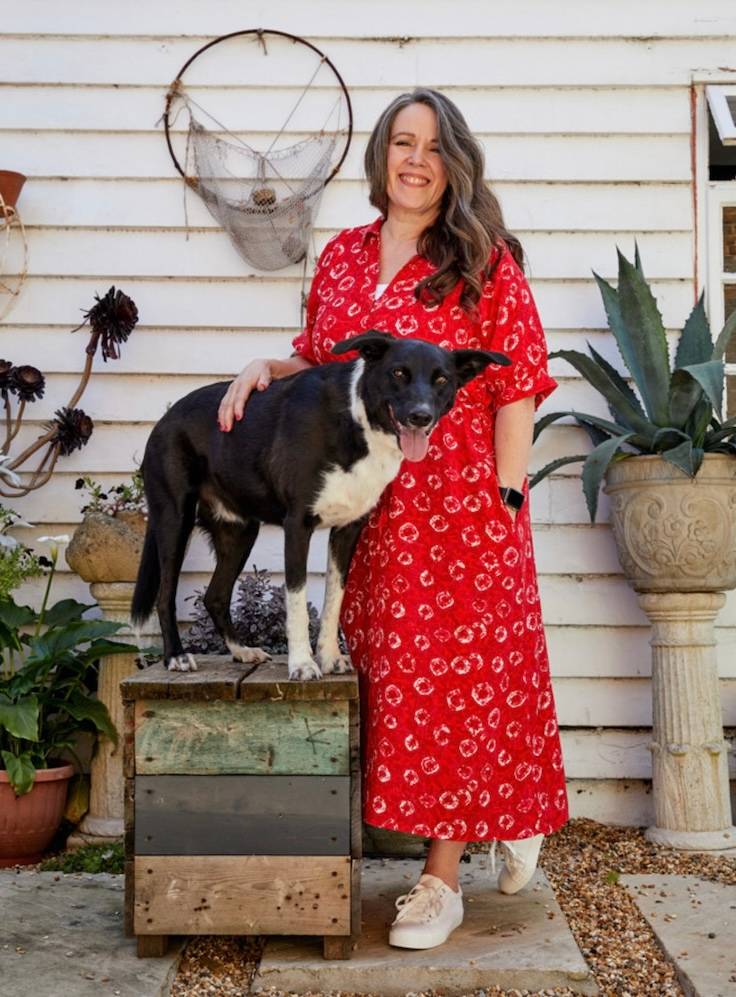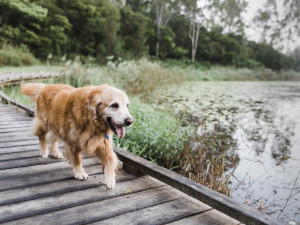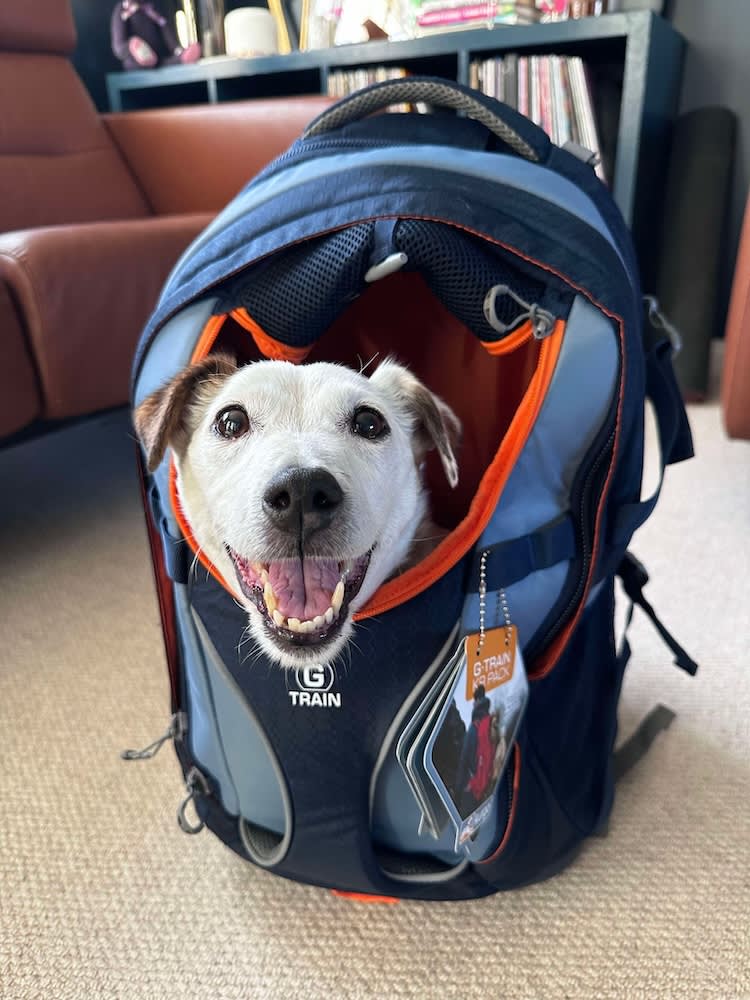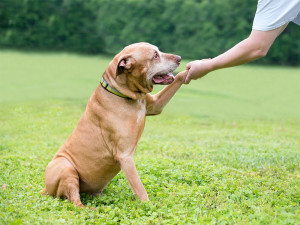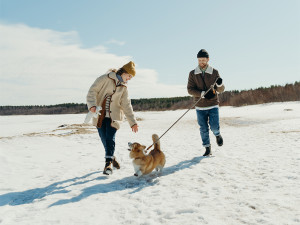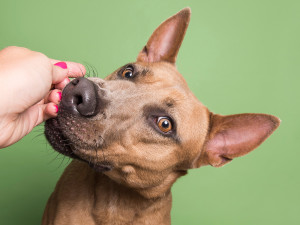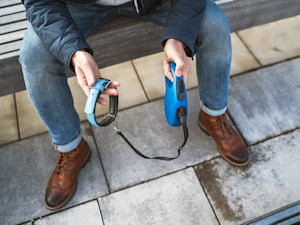7 Ways to Make Your Dog’s Final Years More Special
Let them know how much they’ve done for you by doing everything for them
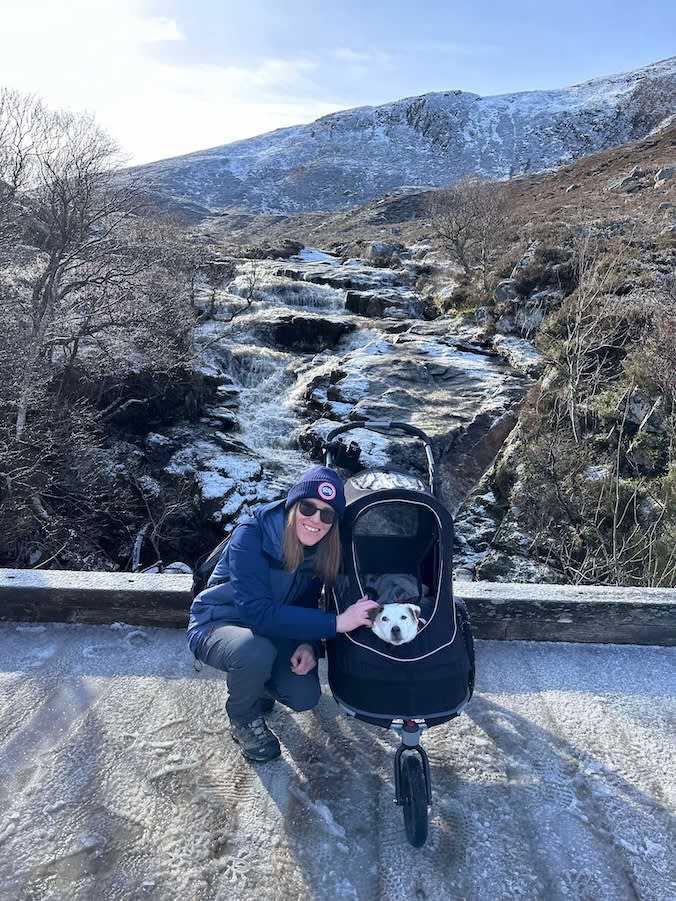
Share Article
With the average pup living to around 14 yearsopens in a new tab, time with your beloved dog can feel like it’s slipping by too quickly. As they grow older, things inevitably change – that once bouncy, bright-eyed puppy may now be creaky, cantankerous and unable to leap off the sofa for a walk – but that doesn’t mean you love them any less.
With the challenges of old age ahead, Dr Anna Ewers Clark, a vet with the Blue Cross, says that going through the latter part of your dog’s life may not always be a pleasure but it will always be a privilege. “We usually outlive our precious pets, so they never have to know what life’s like when we're gone. There’s something quite beautiful about that,” she says.
The key to caring for your senior dogopens in a new tab is keeping a close eye on them. Dr Clark suggests keeping a short diary noting any changes, or even scoring each day for general well-being. This, she says, will give you a better overall picture of their health so you can chat your vet through changes and, sadly, know when the time may be right to say a final goodbyeopens in a new tab.
“The amazing Blue Cross Pet Loss Serviceopens in a new tab is there for everyone – not just for those who have already said goodbye to their dogs,” she says. “Support is there for those final years, too.”
“In the meantime, don’t dismiss changes by simply putting them down to old age. Your vet is there to listen and help – it may be that your dog would benefit from painopens in a new tab killing medication for arthritisopens in a new tab or a change in diet to get the nutrients they lackopens in a new tab,” adds Dr Clark. “I’ve treated elderly dogs whose owners have said it’s like they’ve been given their lives back. It’s all about snatching those precious moments of joy.”
Ahead, seven ways you can make sure those twilight years are as rewarding as possible – for both you and your dog.
Rethink your walks
Daily dog walks can often be for your own mental wellbeing as much as your dog’s need for exercise. It’s a chance to take in some fresh air, chat with other dog parents and satisfy that sense of duty we have to ‘tire out’ our pets. But would they be happier paws up on the couch? “Even dogs with painful conditions will still get excited when you pick up the lead,” says trainer Niki French, author of Stop Walking Your Dogopens in a new tab. “It’s up to us to assess their changing needs as they age and ask yourself if it’s a selfish decision. Is this walk for your dog… or for you?”
When your pet seems to be slowing down, she suggests a gentle stroll together is more appropriate, rather than the usual charge to the park. Allow them to explore and sniff at their own pace before leaving them to settle at home and you venture out again if you want to get your steps in.
Snap the silly stuff
Is your phone is 90 percent posed selfies with your pooch? Don’t forget to capture more imperfect moments, too as they’ll bring your pup back to the forefront of your mind when they‘re no longer around. “It’s a chance for you to one day trigger the happy memories,” says Jet Lendon, who helps pet parents capture the true spirit of their four-legged family members in her dog photography workshopsopens in a new tab. “I came into the room yesterday and our 16-year-old Labradoodle was just sitting there on the dining table. Now that’s a photo that will, one day, help me remember the naughty, silly dog we love.”
Jet has a list of tips for taking the picture you‘ll treasure forever including always holding your phone upside down to get the lens more on your dog’s level and using portrait mode to blur background clutter when taking close-ups of their nose or paw pads – “the little things you may love about him”. Going for a portrait of your snoozing dog, but he’s in a gloomy corner? “Use a sheet of tinfoil to reflect more light on him so you don’t need to disturb a cranky dog with a camera flash,” she says.
Let your sleeping dog lie
You may be surprised to learn that, dependent on breed, dogs should be sleeping for over 12–16 hours per day. The PDSA’s 2024 Paw Report opens in a new tabrevealed that a large proportion of our dogs aren’t getting enough shut-eye, with 27 percent getting under ten hours or less in a 24-hour period. “Sleep increases with age, so make sure your dog is kept comfortable with an orthopaedic bed as that will help with stiff, sore joints,” says Gemma Renwick, a registered veterinary nurse with the charity.
Hard though it may be, the temptation to wrestle them onto your lap may not do arthritic dogs any favours, so reserving a chilled corner for your elder pooch is essential when cuddles get too much, especially if you have a busy household or boisterous kids. “Give them that quiet option and let them lead,” advises Gemma. “Tired dogs are cranky dogs, so it’s really important not to disturb them if they retreat.”
Take them along for the ride
When it comes to dog-related retail therapy, cute jackets of puppydom might make way for mobility aids, and if it makes you both happy, then by all means flash the cash. Keen walker Tracy Cormack, pup parent of 14-year-old Poppy, has invested hundreds in transportation for her beloved senior Jack Russell.
“We still go out and about together, though she has a giant tumour in her belly and her front legs are twisted with arthritis,” says Tracy. “Poppy can only walk about 15 steps but she adores coming out with us in her bike trailer, buggyopens in a new tab or backpackopens in a new tab, and has been with me paddleboarding, to festivals, hotels and country walks. I take her anywhere as now she’s retired as my granny’s companion dog. It’s time for her to have fun. It’s been money well spent.”
Stimulate their senses
Take permission to skip the high-energy games of fetch you once enjoyed together and try exercising your dog’s mind instead of their body. “Your older dog might be losing their sight or hearing but their sense of smell will be with them until they die,” says Niki. “We know that using the nose can improve well-beingopens in a new tab. Let your dog sniff out hidden healthy treats around your home or garden – I like freezing bits of homemade pate or chopping carrots. Try to place them in raised ‘sniffle stations’ – a pile of towels, an upturned plant pot – rather than just chucking them on the ground, which could aggravate any neck or spinal issues.”
Give them a boost
Arthritic joints can hamper the scamper, but slow, everyday movements can also become too much for an elderly dog. It’s only natural you’ll want to snuggle up for a gentle squish with your good boy or girl but they may now need some help to climb up to your level.
“Wilf is like an old fella trying to kickstart his motorbike when he tries to get on the sofa,” says dog parent Chris Watson, who now lifts his elderly Cockapoo to his usual comfy spot. “He gets off again by putting his front legs on the floor and then sliding his back end down, very slowly... as I hold my breath! Positioning cushions helps and I’ve got my eye on some soft pet stairsopens in a new tab and a foldable car rampopens in a new tab to make it easier for Wilf to get into the boot when we go out. He still loves rolling in mud, so it’s not always practical to lift him.”
Don’t go changing
Declining eyesight and loss of hearing are part of growing older, and it may be your dog is showing signs of dementiaopens in a new tab such as confusion, staring into space or peeing/pooing indoors.
So, if those bright eyes start to cloud with cataracts or they don’t answer your dinner call the first time, keep them safe by avoiding changes to your surroundings. “Try to keep things as familiar as you can,” says Gemma . “Now might not be the right time for a new house – or even that new sofa. Dogs do learn their way around, so keep things constant for them. Don’t move furniture suddenly and stick to the same routes on your walks together.”
Lesley Jones
Related articles
![A senior Retriever/Terrier mixed breed dog shaking hands with its owner.]() opens in a new tab
opens in a new tabHow to Teach an Old Dog New Tricks
Your senior dog might move slower these days, but that doesn’t mean they can’t learn new things
![Two brown senior pointer dogs]() opens in a new tab
opens in a new tab‘Old Dog’ Vestibular Disease and Treatment
If you have an older dog, they could have a condition called idiopathic vestibular disease. Here’s everything you need to know
![Dogs gathered in the backyard celebrating first birthday. Unrecognizable owner holding a birthday cake with a candle.]() opens in a new tab
opens in a new tabHow to Calculate Your Dog’s Age in Human Years
A new way to convert dog years to human years
![A happy looking man and woman walking their dog outside in a large snowy field.]() opens in a new tab
opens in a new tab10 Ways to Make Your Dog’s Life Better
Simple resolutions to boost your dog’s happiness, health and well-being all year long
![Tan dog eating a treat from the photographer's hand against a light green background]() opens in a new tab
opens in a new tabSophie Gamand’s Secrets to Snapping Incredible Dog Pics
My pro tips for taking grid-worthy (and life-saving) portraits of your pooch
![man holding dog lead and collar]() opens in a new tab
opens in a new tabWhat to Do, Practically, When Your Pet Dies
It might not be something you ever want to think about, but planning ahead will be a help when the time comes
